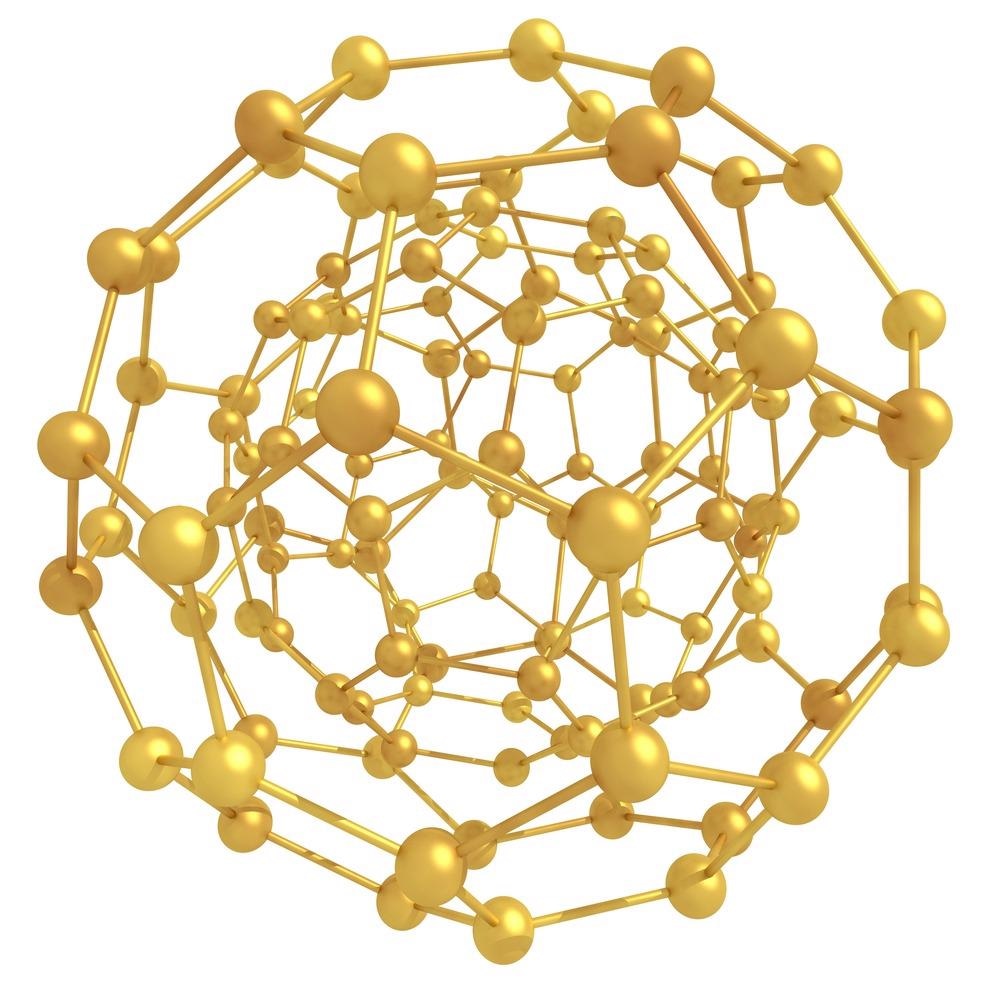Quantitative characterization of interactions between nanoparticles (NPs) and proteins via a high-throughput manner is challenging. In an article published in the journal Analytical Chemistry, researchers adopted a colorimetric approach toward quantitative analysis of adsorbed proteins onto the NP's surface.

Study: High-Throughput Colorimetric Analysis of Nanoparticle–Protein Interactions Based on the Enzyme-Mimic Properties of Nanoparticles. Image Credit: Angel Soler Gollonet/Shutterstock.com
Interactions Between Nanomaterials and Proteins
Engineered nanomaterials are applied in biomedical fields for bioimaging, disease diagnosis, and drug delivery. Upon entering a biological environment, nanomaterials adsorb serum proteins and instantly form a "protein corona" that may alter the physicochemical properties of the nanomaterials. Thus, the altered nanomaterials determine the immune response and biological behaviors of proteins like targeting ability, cytotoxicity, and cellular internalization.
It is therefore necessary to understand the interactions between nanomaterials and proteins to design effective and safe nanomaterials functionalized for clinical applications. Despite continuous efforts by researchers to understand nano-bio interactions, the protein adsorption behavior onto the nanomaterial surface remains unclear. To this end, versatility in nanomaterials and lack of efficient characterization tools could be attributed as possible reasons for the lack of clarity in nano-bio interactions.
Although biophysical techniques illustrate the mechanistic aspects of protein-nanomaterial interactions, these techniques cannot achieve a high-throughput quantitative analysis of protein corona due to complex operating systems or susceptibility of the protein corona to environmental degradation. This inefficiency in existing methods limits the extraction of important information regarding protein-NP interactions. Thus, it is imperative to develop robust analytical tools for the quantitative characterization of protein-NP interactions in a high-throughput manner.
Nanoparticles exhibit intrinsic peroxidase-like activity influenced by the surface environment. Thus, it is challenging for the NPs to adsorb the analytes from the solution. This difficulty in adsorption negatively affects the catalytic efficiency in the colorimetric reactions. Consequently, the solution shows changes in the absorbance values, reflecting adsorption events.
Cationic NPs can easily bind to biomolecules and undergo cellular internalization. Hence, they are extensively applied in biomedicine. However, the study of the cationic NP interactions with biological systems remains practically unexplored.
High-Throughput Colorimetric Analysis of Nanoparticle–Protein Interactions
In the present work, the researcher proposed a new, colorimetric approach for quantitative analysis of protein adsorption on NP's surface owing to their peroxidase-like properties. They considered cationic gold (Au) NPs to demonstrate the colorimetric method's ability to evaluate NP-protein interactions in multiwell plates using a high-throughput manner. The team obtained the binding parameters for three different serum proteins and human protein to AuNPs. Based on the quantitative analysis of NP-protein interactions, they observed that the binding affinity and consequent inhibition efficiency of the AuNP nanozyme activity were affected by the properties of the bound proteins and NP size.
Research Findings
The NP-protein interactions were evaluated based on the peroxidase-mimicking colorimetric reactions. The researchers first studied the interactions of AuNPs whose average diameter was 4.6 nanometers (denoted as AuNPs-5) with bovine serum albumin (BSA).
The results revealed the peroxidase-like catalytic features of AuNPs-5 and its ability to oxidize the substrate 3,3',5,5' -tetramethylbenzidine (TMB) into a blue product, whose maximum absorbance was 652 nanometers in the presence of hydrogen peroxide (H2O2). Based on the control experiment, the researchers confirmed the necessity of H2O2 and AuNPs for TMB oxidation and optimized the concentration of TMB and H2O2 at 4 millimoles and 1.2%, respectively, to yield the largest colorimetric changes.
The physiological conditions for NP−protein interactions were simulated by performing the colorimetric experiments in phosphate-buffered saline (PBS) with a pH of 7 and at a temperature of 37 degrees Celsius. The gradual decrease in absorbance with increased concentration of BSA in AuNPs solution suggested the peroxidase-mimicking catalytic activity of N,N,N-trimethylammonium bromide (MUTAB)-AuNPs, whose activity was weakened by the presence of BSA, consequently inhibiting the substrate proximity to AuNP's surface. The team observed that the protein corona features such as corona composition and protein orientation pose a role in catalytic processes.
By fitting the results into the modified Hill equation, they could obtain an agreement that yielded a dissociation coefficient (KD') of 3.5 ± 0.4 × 10−8 molar units. Moreover, the obtained maximum efficiency (Emax) of 0.84 ± 0.03 confirmed the BSA's high suppression effect on the peroxidase-like activity of AuNPs.
Conclusion
In conclusion, the researchers demonstrated that the mechanistic studies of protein adsorption on NPs with enzyme-like activity could be conducted using a colorimetric platform. The cationic MUTAB−AuNPs with peroxidase-like activity were used to demonstrate that the colorimetric method can evaluate the interactions between NP−protein in multiwell plates in a high-throughput manner. The quantitative analysis of colorimetric data revealed that the protein features strongly influenced the binding affinity and the consequent MUTAB−AuNP's nanozyme inhibition activity. This nanozyme's inhibition activity mimicked the natural enzymes in terms of protein binding at active sites, leading to a significant loss in catalytic activity.
Reference
Mengyao Wen, Juanmin Li, Wencheng Zhong, Jie Xu, Shaohua Qu, Hui Wei, and Li Shang (2022). High-Throughput Colorimetric Analysis of Nanoparticle–Protein Interactions Based on the Enzyme-Mimic Properties of Nanoparticles. Analytical Chemistry. https://pubs.acs.org/doi/10.1021/acs.analchem.2c01618
Disclaimer: The views expressed here are those of the author expressed in their private capacity and do not necessarily represent the views of AZoM.com Limited T/A AZoNetwork the owner and operator of this website. This disclaimer forms part of the Terms and conditions of use of this website.